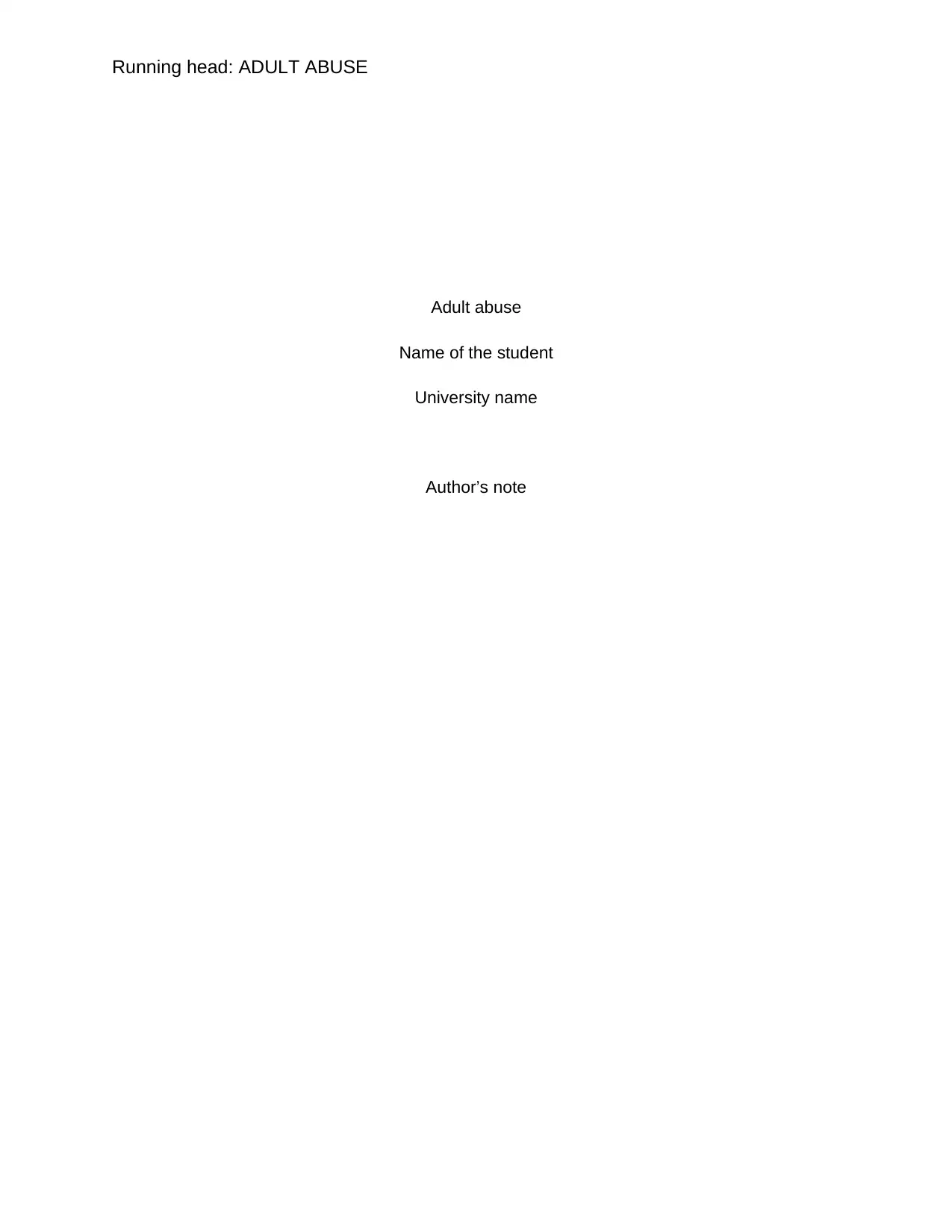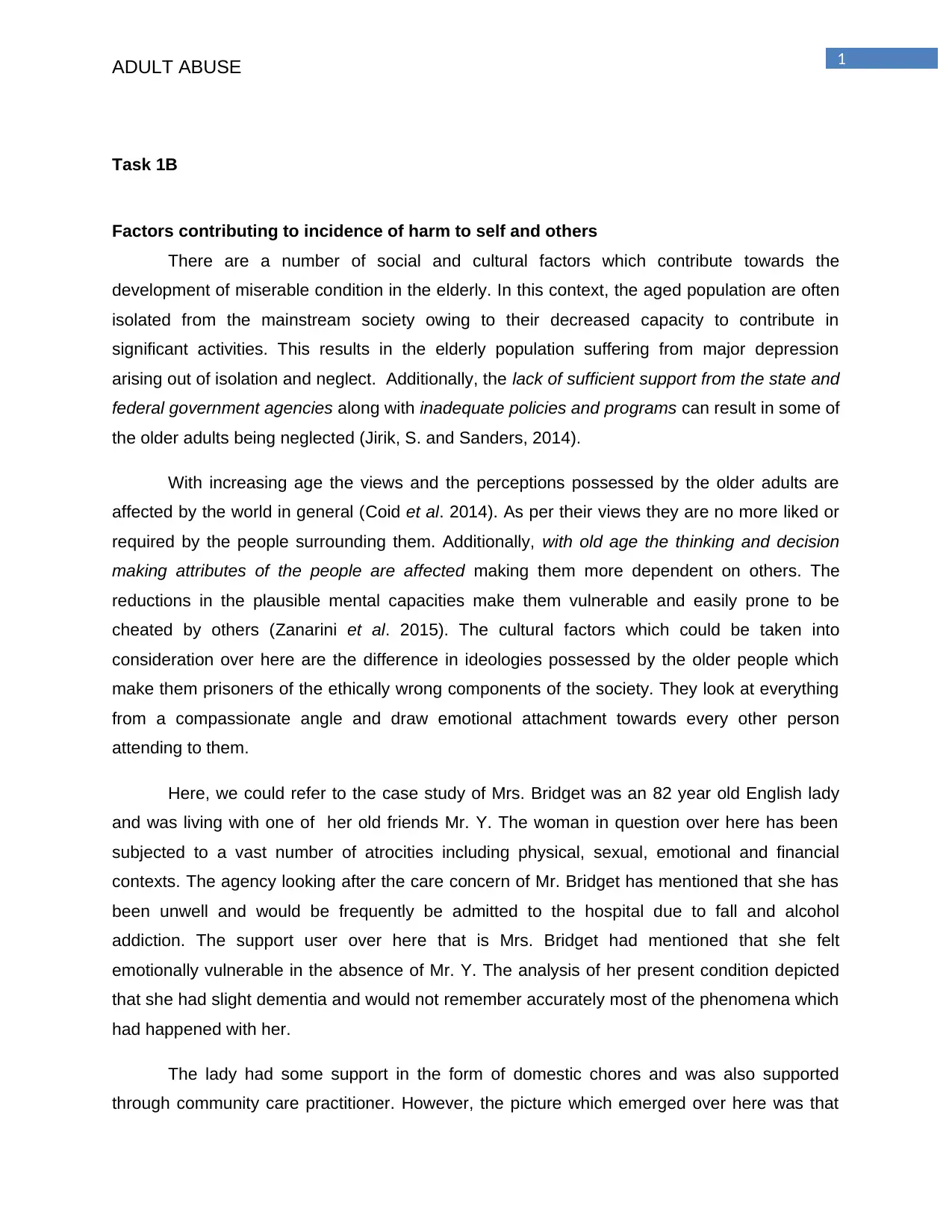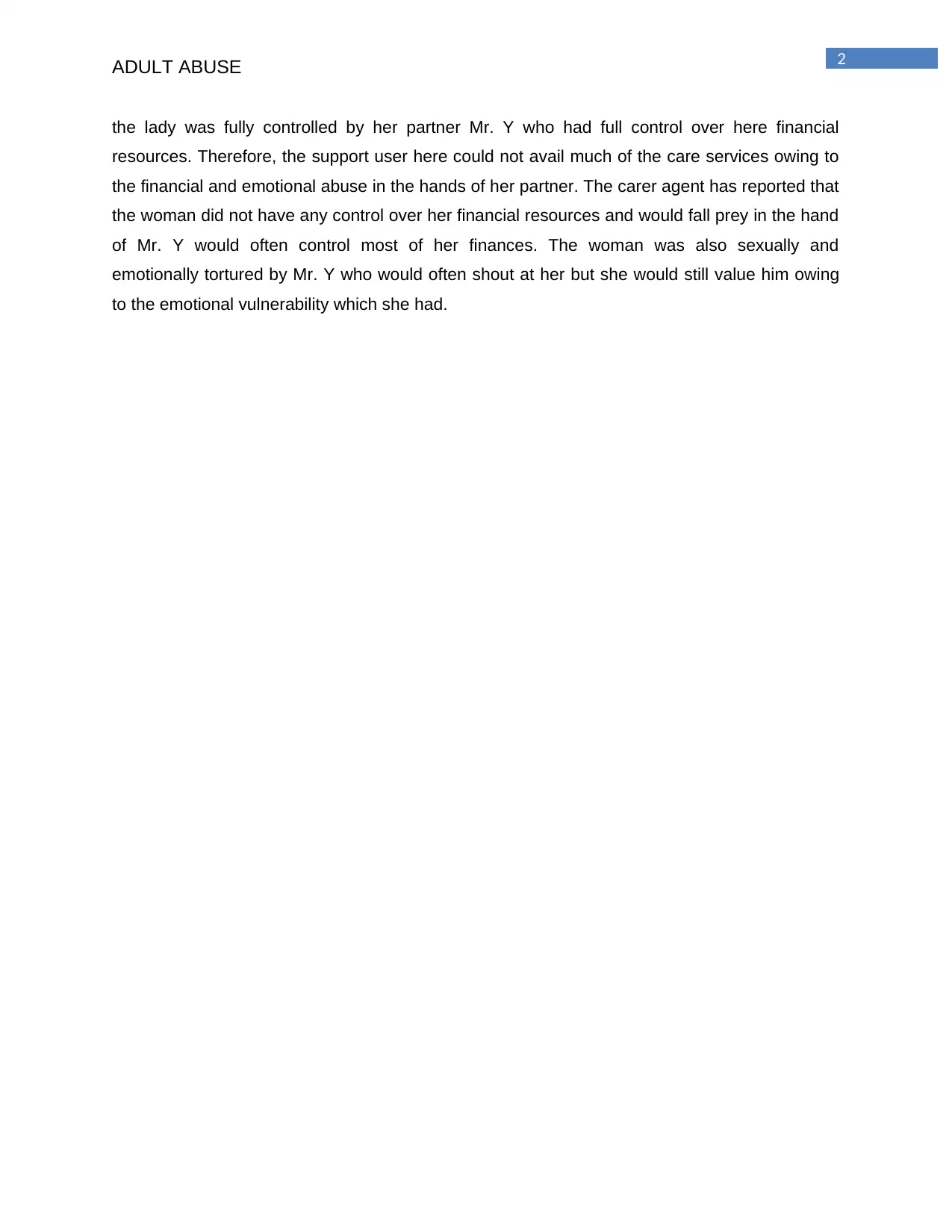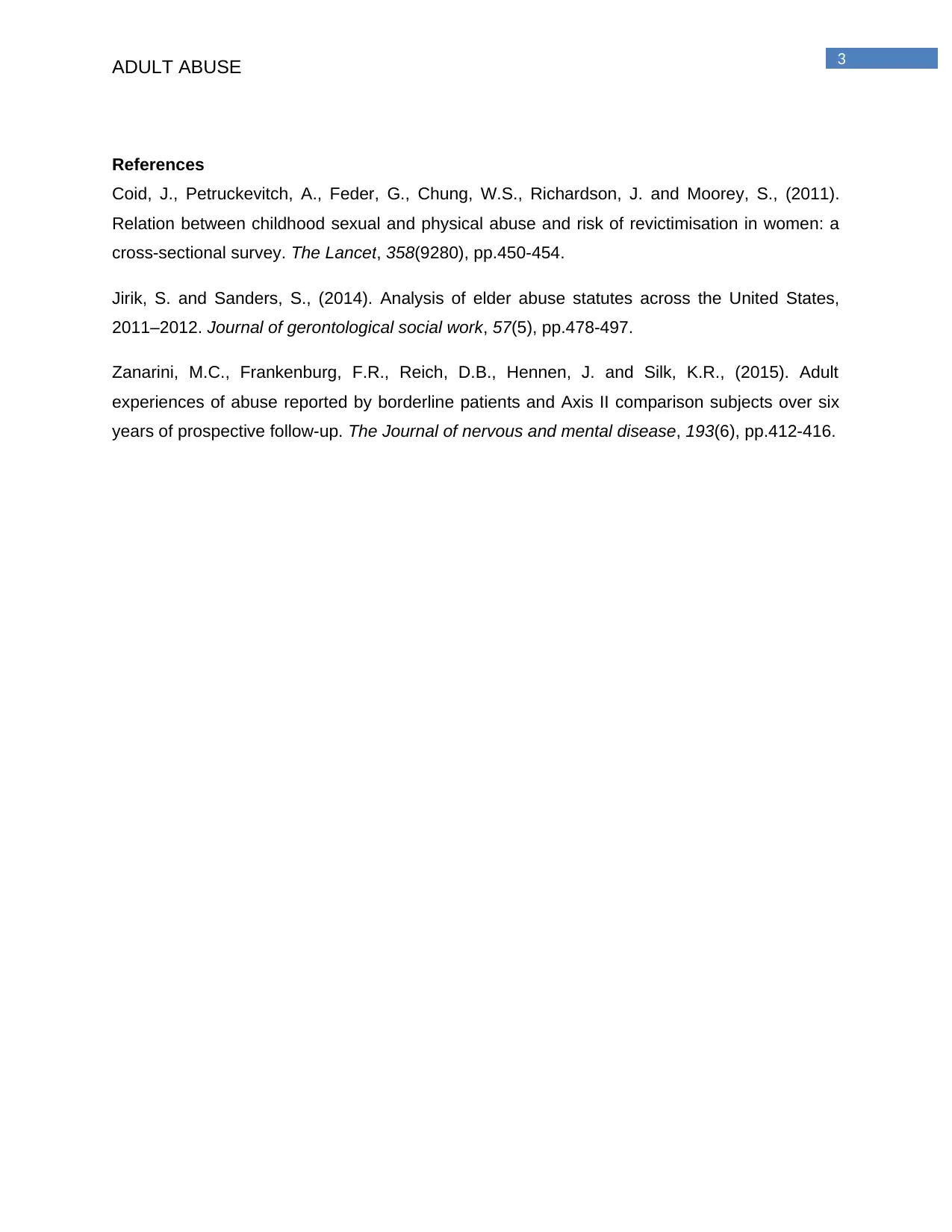Adult Abuse and Contributing Factors
VerifiedAdded on 2020/04/21
|4
|719
|38
AI Summary
This assignment delves into the complex issue of adult abuse, examining various social and cultural factors that contribute to its occurrence. It analyzes how societal isolation, age-related perceptions, and cognitive decline can make older adults more vulnerable to harm. The case study of Mrs. Bridget illustrates how financial and emotional abuse can limit an individual's access to support services and perpetuate a cycle of mistreatment.
Contribute Materials
Your contribution can guide someone’s learning journey. Share your
documents today.
1 out of 4










![[object Object]](/_next/static/media/star-bottom.7253800d.svg)